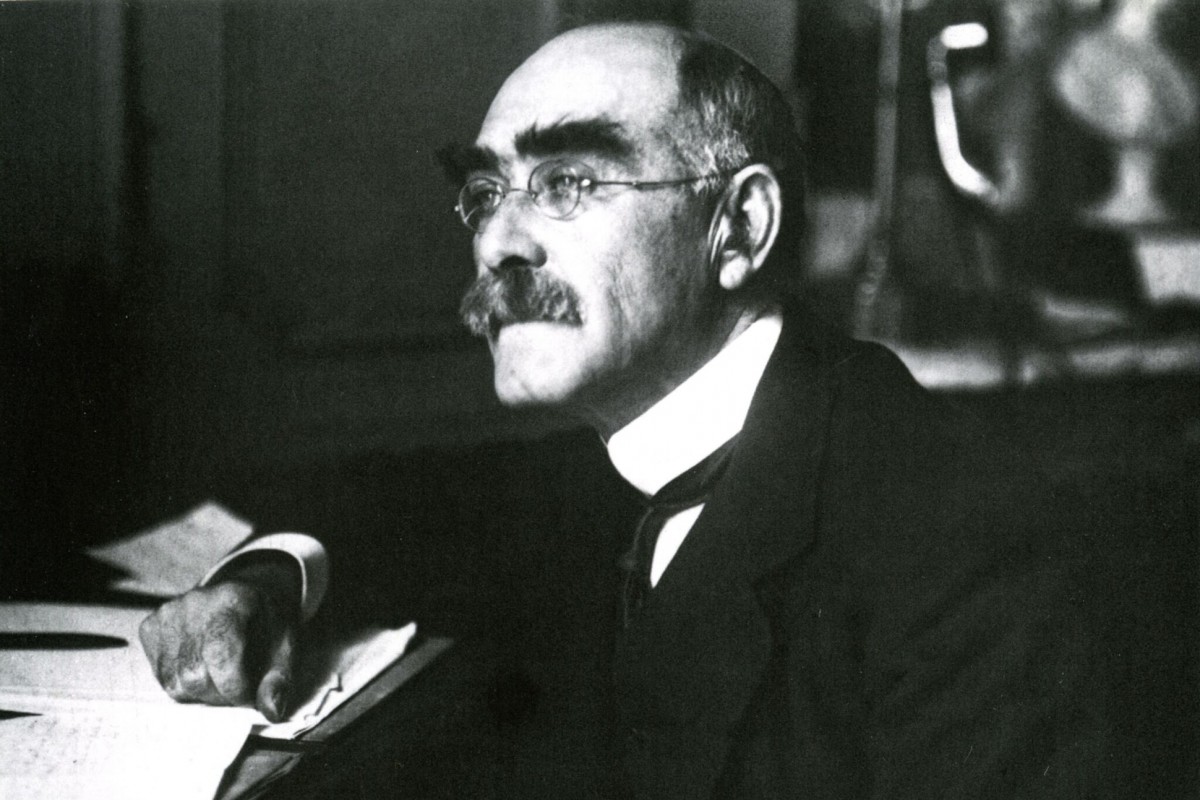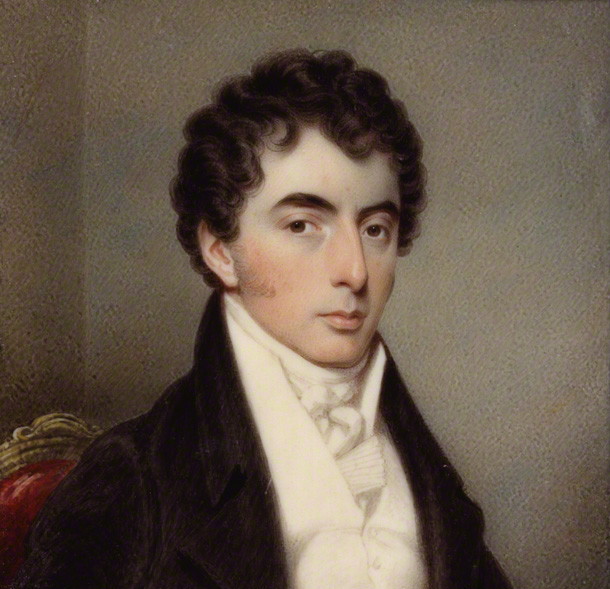This poem analysis of ‘The Way through the Woods’ by Rudyard Kipling is divided into four parts – context, rhyme scheme, themes, and deeper meaning.
Context:
This part of the poem analysis focuses on both the context of the publication of the poem and the possible context for writing it as well. ‘The Way Through the Woods’ is part of Kipling’s collection of short stories known as Rewards and Fairies. In this collection, each short story is both preceded and followed by a poem. The poems in the collection include the very famous poem ‘If’ and a lesser-known one entitled ‘Cold Iron’, along with ‘The Way through the Woods’, among others.
It has been speculated that the particular forest path that Kipling writes about had been the site of an unnatural death and had been closed down as a result of that. Perhaps Kipling had heard the local population telling such stories and had been inspired to write a poem about the same. Though there is no concrete evidence behind such a supposition, it is not entirely incredible to think that ghost stories could have got Kipling’s creative juices flowing since anyone familiar with Kipling’s writing would know that he is fond of writing about action and adventure, and ghost stories evoke the same kind of romantic visions that many of Kipling’s poems and stories do.
Rhyme Scheme:
No consistent rhyme scheme is followed throughout the two stanzas of this poem by Kipling. However, end rhymes are common enough here. For example, lines 2 and 4 (ending with the words “ago” and “know”) rhyme. So do lines 9 and 11 (ending with the words “sees” and “ease”), lines 10 and 12 (ending with the words “broods” and “woods”), lines 14 and 16 (ending with the words “late” and “mate”), lines 18 and 20 (ending with the words “few” and “dew”), and lines 21 and 23 (ending with the words “through” and “knew”). In addition to this, both lines 24 and 25 end with the same word – “woods.” This echoes the fact that the last word of the first stanza is also “woods.” Finally, what is not often noticed, but which, once noticed, cannot escape the reader’s attention is that both the third and the seventh lines of each of the two stanzas contain internal rhymes. So in line 3, “rain” rhymes with “again.” In line 7, “underneath” rhymes with “heath.” In line 15, “cools” rhymes with “pools.” And in line 19, “beat” rhymes with “feet.”
Themes:
This part of the poem’s explanation focuses on three key themes explored by Kipling in ‘The Way through the Woods’ – the metaphysical presences in earthly life, the power of nature over man, and how history can never entirely be obliterated.
Earthly life is, by definition, confined to the physical. However, there are always events that occur in life for which we cannot find any rational explanation. In ‘The Way through the Woods,’ the poet-narrator first builds up suspense by alternating between a time when the forest path existed and another time when it has disappeared among the undergrowth of the forest. The poet-narrator then makes it clear that an observer will hear horse’s hooves where the forest path had been despite no horse being visible and the swishing sound of a woman’s skirts even though there was no woman actually present at the scene. Perhaps this is the ghost of the woman whose unfortunate death had led to the closing down of the forest path. However, Kipling does not provide enough material to confirm such a reading, and this could, in fact, be intentional. By describing something that does not have any material existence on earth, Kipling is hinting at the presence of the metaphysical within the space of the forest (‘meta’ meaning beyond).
It is human intention that has resulted in the forest path being closed down; this is true. However, nature has entirely reclaimed the place where the path had once existed. The creatures of nature are seen frolicking around the trees and shrubs, and the rainy weather is what is responsible for the sense of finality one experiences regarding the complete disappearance of the forest path. This poem was written at a time when industries were spreading rapidly, and the English countryside was becoming scarce in forestry as a result. In such a milieu, by showing how a forest can cover up and swallow whole a man-made path, Kipling is arresting that Mother Nature still holds her sway over the earth and can never be removed from her position by puny men.
However, where mankind has once lived, the place is bound to be indelibly stamped by some sign of their previous habitation. The forest path may have disappeared, but the rider who had ridden over that ground on her horse can still be perceived. Human history operates in the same way – civilizations may disappear under the dust on the earth, but traces of their existence always remain and are unearthed to begin new historical expeditions now and then. These historical expeditions then tell untold stories of our very ancestors.
One other way in which Kipling explains the persistence of history is by showing us the vestiges of an earlier way of life in the English countryside that he depicts in ‘’The Way Through the Woods’. During the Victorian era, common land was taken any from peasants, and the estates of rich landowners were often fenced in, with all roads and pathways leading to them being closed off. Kipling might be describing such a road leading to an eminent man’s estate. There is strong evidence in the poem itself to suggest the same when the poet-narrator mentions “the keeper” in line 9. Gamekeepers would patrol the area in and around closed-off estates to prevent poor peasants from stealing rabbits or pheasants. Perhaps Kipling is describing one such gamekeeper who knows the area around the estate he patrols very well, and knows that a forest path existed there seventy years ago.
Deeper Meaning:
There is a theory that says that the forest path in ‘The Way through the Woods’ is a metaphor for how mankind itself has lost its way. Being written at the beginning of the modernist age, this poem could be speaking about the alienation of mankind from the kind of life that had existed before industrialization and urbanization, when man had lived in close contact with nature. However, such a life no longer exists, except in folklore and tales.
This theory may seem like a case of over-analysis, but it has been included in this poem’s explanation to give a sense of completeness to what can be derived from the seemingly simple content of the words in Kipling’s poem.
Dear Readers- If this summary/analysis has helped you, kindly take a little effort to like or +1 this post or both. Make sure you like Beamingnotes’ Facebook page and subscribe to our newsletter so that we can keep in touch. We’ll keep informing you about stuff that is really interesting, worth knowing, and adds importance to you.
Updated by Anjali Roongta on 28 April 2023.
Some online learning platforms provide certifications, while others are designed to simply grow your skills in your personal and professional life. Including Masterclass and Coursera, here are our recommendations for the best online learning platforms you can sign up for today.
The 7 Best Online Learning Platforms of 2022
- Best Overall: Coursera
- Best for Niche Topics: Udemy
- Best for Creative Fields: Skillshare
- Best for Celebrity Lessons: MasterClass
- Best for STEM: EdX
- Best for Career Building: Udacity
- Best for Data Learning: Pluralsight















“The way through the woods” poem precedes the story “Marklake Witches” in “Rewards and Fairies”, essentially a children’s book, although perhaps it would now be regarded as a “young adults” book. Published in1910, “Rewards and Fairies” is a follow up to “Puck of Pook’s Hill” in which two children, Dan and Una are introduced to individuals from Britain’s past by the magical Puck, an ancient being who embodies the world of tradition and is independent of time. After the children have encountered people from many different past eras, Puck takes away their direct memories, leaving them with only partial sense of what has gone on. Each encounter is preceded and followed by a poem which comments on, or has some relationship to the story being told.
In “Marklake Witches” Dan is absent, and 13 year old Una meets a 16 year old young girl called Philadelphia (“Phil”) from the Napoleonic period – the early 19th century. From the start, it is obvious that Phil is soon to die from consumption, although neither she nor Una knows this. We learn that Phil is a keen horsewoman who loves to ride in the woods of her father’s estate.
When Puck restores Una to the real world and takes away her literal memory of the encounter, she and Mrs Vincey, a farmer’s wife who comes to fetch Una, seem to hear a galloping horse, though it is unlikely that a galloping horse can be near.
Kipling is surely suggesting that after Phil’s death her father, in his grief for her’ has shut up the road on which she loved to ride. It has been overgrown by nature, but perhaps her ghost still haunts it. There are many other references to the supernatural in the book. Of course this suggestion does not preclude other meanings in the poem.
Excellent confirmation of my own thoughts on the themes.
I enjoyed the inline rhymes but had really noted them.
I wonder why some of the lines flow so beautifully and others faulty. I.e. When the night-air cools on the trout-ringed pools. Very succulent on the tongue.
I loved the clarity and the sense of this analysis and found it very helpful. I’m a 64 year old Australian living in Melbourne and I have a PhD on Robert Lowell. I run my own tuition agency for secondary students mainly of Asian culture. I am trying to show one girl how to write a coherent essay and think I’ll refer her and some others to this perfect example. Ithink you mean ‘attesting’ at one point not ‘arresting’ though the later meaning is also interesting. Thank and good luck with your studies.